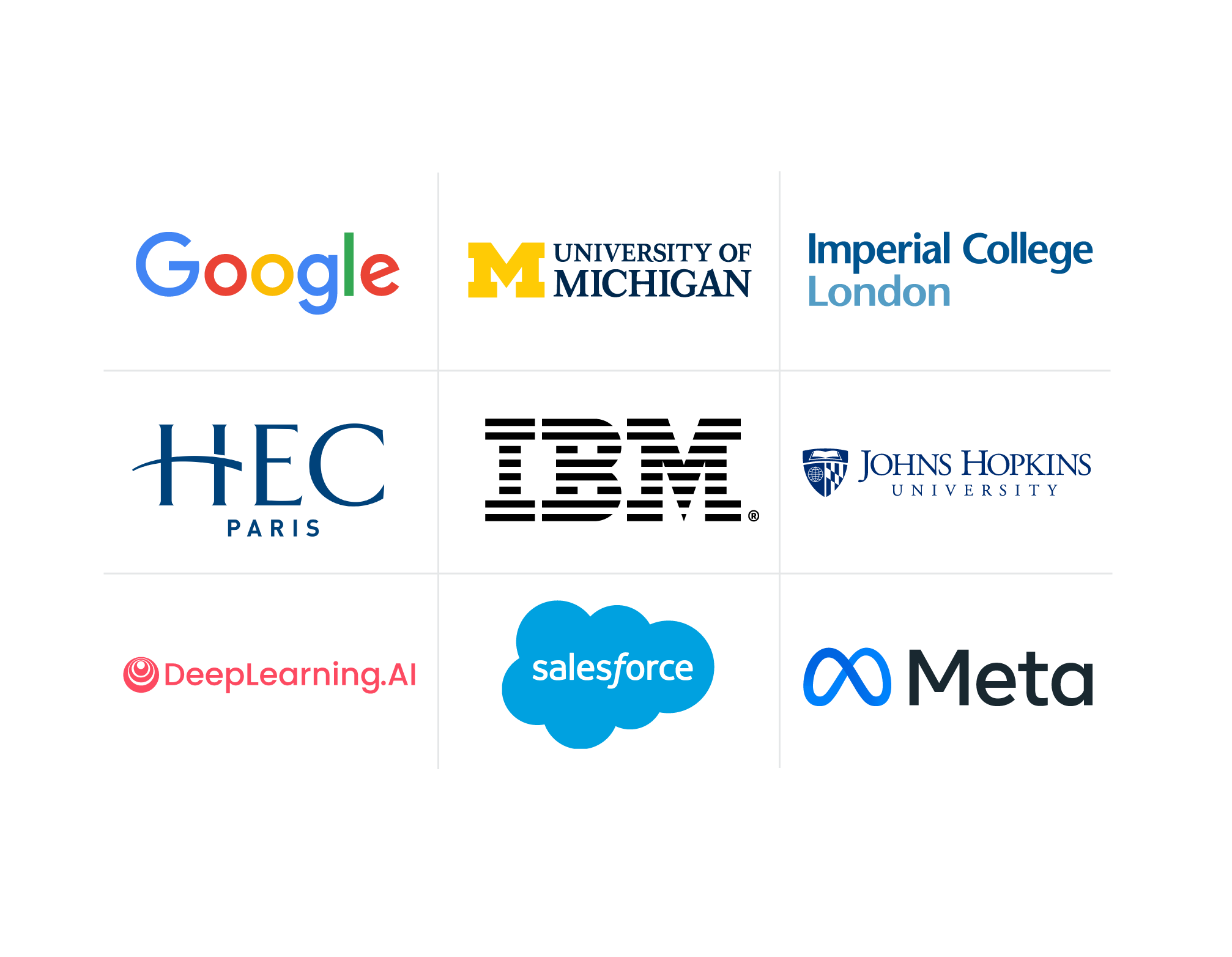The Significance of Student Learning Outcomes for Corporate Learning and Development
Explore what student learning outcomes are and why they are an essential part of your outcome-based approach to corporate training programs. Also, get tips to help you develop and implement learning outcomes at your company.
![[Featured Image] A businesswoman smiles and claps as company leadership outlines student learning outcomes as part of the organization's career development program.](https://d3njjcbhbojbot.cloudfront.net/api/utilities/v1/imageproxy/https://images.ctfassets.net/2pudprfttvy6/6jVuOHt08vEwVhHV0CAgnz/b9859902187bec57684c18f0eba7634d/GettyImages-1141462783.jpg?w=1500&h=680&q=60&fit=fill&f=faces&fm=jpg&fl=progressive&auto=format%2Ccompress&dpr=1&w=1000)
Student learning outcomes refer to the specific skills, knowledge, or abilities instructors try to teach during a given learning experience. Regarding corporate learning and development initiatives, learning outcomes can help you align your training programs with company objectives and fill skill or knowledge gaps in your workforce.
Explore how student learning outcomes and outcome-based learning can impact your career development programs. Learn about the benefits of an outcome-based approach and tips for writing learning outcomes for your professional development efforts.
What are student learning outcomes in a corporate context?
Learning outcomes point to what the organization expects the person undergoing training to learn from the activity. In other words, they define what you expect learners to master while participating in corporate training. These statements are written from a learner’s point of view and include measurable goals specific to the employee’s knowledge, skills, or abilities. Sometimes called performance-based education, centering your training program around these learning outcomes can keep training programs focused, help learners understand the key takeaways, and aid organizations in appreciating the value of training.
Read more: Fostering a Learning Culture within Your Company: Your 2025 Guide
Benefits of implementing learning outcomes
Outcome-based training offers several benefits for both employees and company leadership, including:
Limiting the focus of training: Student learning outcomes help instructors keep learning programs on track by allowing them to focus only on the information that will help employees achieve their learning objectives. Instructors can also use learning outcomes to understand the scope of what any individual learning activity can accomplish.
Improving training programs: Instructors can also use learning outcomes to enhance learning and development activities by writing curricula or designing training around the outcomes that relate to organizational goals.
Helping learners understand key takeaways: Learning outcomes outline what employees can expect to learn in the class or learning activity, manage expectations, and give them a metric to aspire to.
Demonstrating relevance: Learning outcomes often provide clues about how learners can relate their learning to their careers and work responsibilities.
Demonstrating value: An outcome-based approach to corporate training can highlight why the training is essential and valuable enough to warrant company time and resources. Because they are also measurable, learning outcomes provide a method for demonstrating the success of a program after it’s concluded.
Read more: What Is a Performance Improvement Plan?
Elements of learning outcomes
Effective learning outcomes go beyond simply stating what a program teaches, factoring in a few key components that can make them even more beneficial to companies. Effective student learning outcomes are:
Measurable: You optimize the efficacy of learning outcomes when you define success and how learners will know when they achieve it. You should also understand how to measure the learning outcome. For example, you may conduct performance reviews or more structured assessments.
Related to company goals: What makes the training program meaningful to your staff? Learning outcomes should relate to company goals, and you should be able to understand the relevance of all training programs.
Centered on the learner: Learning objectives that center on the learner’s experience instead of the instructor's or company’s experience can empower employees to take a more proactive role in their training.
Realistic: You should set realistic learning outcomes and consider the resources employees will need to achieve the goals you set for them.
Clear and transparent: All stakeholders should understand the objectives of a learning program, and the process for setting learning outcomes should be open.
How to write effective learning outcomes
When you’re ready to write learning outcomes for your company training programs, you can take a couple of steps to ensure that your learning and development goals align with company goals and the learning preferences of your workforce. First, examining the components comprising learning outcomes can be valuable.
Next, you can explore tips for identifying the key competencies and skills of the materials you’d like your employees to learn. Then, you can learn more about tailoring outcomes to align with organizational objectives. Last, you can explore some examples of learning objectives to help you begin to write your own.
Components of learning outcomes
When writing student learning outcomes, you should consider the three necessary parts of the statement: the action verb, followed by the stated activity, and a brief explanation of the situation in which your employee will use this knowledge or skill.
Action verb: Every learning statement should include an action verb reflecting the ability, skill, or knowledge a learner will gain after participating in the course. For example, students may “demonstrate” a skill or “apply” their knowledge.
Outcome: This is the stated objective of the learning activity that comes after the action verb or what the learner will gain after completing the course successfully. For example, your employee might “demonstrate” their “proficiency in math” or “apply” their “knowledge of cloud computing.”
Situational limitation: The last component of a learning outcome is the situational limitation within which the employee will use this knowledge or skill. Knowledge of cloud computing is essential, but you need your employees to use it in a specific way, such as “to operate company cloud-based software” or “to contribute to company goals in a specific way.”
Identifying key competencies and skills
After you understand how to structure learning objectives, you can brainstorm the key competencies and skills that can help your team achieve your company goals. Bloom’s Taxonomy is a tool that instructors can use to discuss learning objectives, structuring learning objectives into three domains and six parent categories of actions: remember, understand, apply, analyze, evaluate, and create. Each of these represents a category of other similar action words, such as [1]:
Remember: Describe, recall, and identify
Understand: Explain, discuss, classify, describe
Apply: Identify, illustrate, interpret
Analyze: Examine, predict, compare, survey
Evaluate: Appraise, argue, qualify, recommend
Create: Construct, design, produce
According to Bloom’s Taxonomy, the total number of these action words represents learning objectives in three domains: cognitive skills, mental skills, and attitude.
Tailoring outcomes to meet company objectives
You want to make sure that your training programs help move your company forward toward its organizational goals, so it’s important to tailor learning outcomes to that end. It often begins with a needs assessment to determine any knowledge, skill, or competency gaps in your workforce that could benefit from additional training. A needs assessment can also help pinpoint what your employees need to succeed in learning and development. For example, they may prefer a specific format for training.
Once you understand what areas training should focus on, you can select or create training materials. Your learning outcomes should reflect the critical skills you want to strengthen and your organization’s values and culture. Another thing to consider is your employees’ level of experience. It’s possible that you could create training materials where you are asking individuals at different organizational or skill levels to complete the same learning outcomes. You can include various outcomes or assessment markers to help all your employees succeed.
Examples of learning outcomes
Sometimes, it’s helpful to see examples of learning outcomes to understand whether you are on the right track while creating your own. For example, imagine you are organizing a training seminar on effectively communicating with customers. It’s short-term training, so you should be conscious not to include too many learning objectives, and you’ll want to leave the assessment open-ended to include all members of your team, whether they have a lot of experience working with customers or not. An appropriate learning outcome might be “Improve customer feedback through better communication practices.” This learning outcome also includes a metric for measuring success: customer feedback.
Conversely, you might be designing a longer-term leadership program to help prepare your employees to step into leadership positions as they are available. As this program will take longer to complete, you may include more learning objectives. Your objectives may include:
Improve communication abilities and learn new communication techniques.
Develop stronger relationships with other employees.
Applying conflict management skills when appropriate.
Explore techniques for making better decisions.
Understand employee motivation and develop techniques for engaging with employees.
Improve emotional intelligence for better interpersonal skills.
Learn more with Coursera
Student learning outcomes are vital to developing training programs that meet the needs of both your organizational goals and your employees. Learning outcomes help your employees understand what they need to do to be successful, keep instructors apprised of the materials they need to cover, and help leadership understand the value of training.
When you provide your employees access to training on Coursera, you can select courses that fit your needs by examining the learning objectives they offer. For example, your team could participate in Leading Through Effective Communication, a course offered by Arizona State University on Coursera. You can explore this and many more training programs from over 350+ companies and universities on Coursera for Business.
Article sources
1. Georgia Tech. "Developing Student Learning Outcome Statements, https://academiceffectiveness.gatech.edu/assessment-toolkit/developing-student-learning-outcome-statements#:~:text=Student%20learning%20outcomes%20describe,Affective%20(attitude)." Accessed June 3, 2025.
This content has been made available for informational purposes only. Learners are advised to conduct additional research to ensure that courses and other credentials pursued meet their personal, professional, and financial goals.


